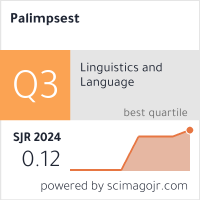A WEDDİNG RİTUAL WİTH TRACES OF SHAMANİSM AND THE OLD TURKİSH BELİEF SYSTEM: CHİCKEN FETCHİNG GAME
DOI:
https://doi.org/10.46763/PALIM251019169uAbstract
In this study, the Chicken Fetching Game, which is important for Bursa and the surrounding provinces, was compiled from the source individuals. The study aims to preserve the beliefs and rituals that have reached the present day from the Old Turkish belief system, with respect to geographical, cultural and folkloric elements of the region and to continue the transfer of culture. This work aims to present the marriage, entertainment and wedding folklore of indigenous peoples and Balkan emigrants living in Bursa. This study identified the game's traces of Shamanism and Old Turkish beliefs. Marriage-related traditions, practices and customs that are an integral part of Turkish culture continue to be found in our localities. Consciousness is not a few years old, which considers marriage to be the fundamental phenomenon in the formation of society. The social memory that thought the family was the smallest building block of the state presented bans and heralds. In the light of beliefs and norms, each society gives a different meaning to marriage and develops practices within that framework. Marriage isn't just a matter for individuals, it's an important event for the society and for the nation in which he belongs. The marriage that underpins the continuation of the generation is considered a threshold and is considered one of the three most important events in one's life. In Anatolia, a game of Chicken Fetching, inspired by village bystander games, is played in and around the city of Bursa, and traces of the old Turkish faith system.
Keywords: Tradition; Bursa; Marriage; Chicken Fetching Game; Shamanism.


